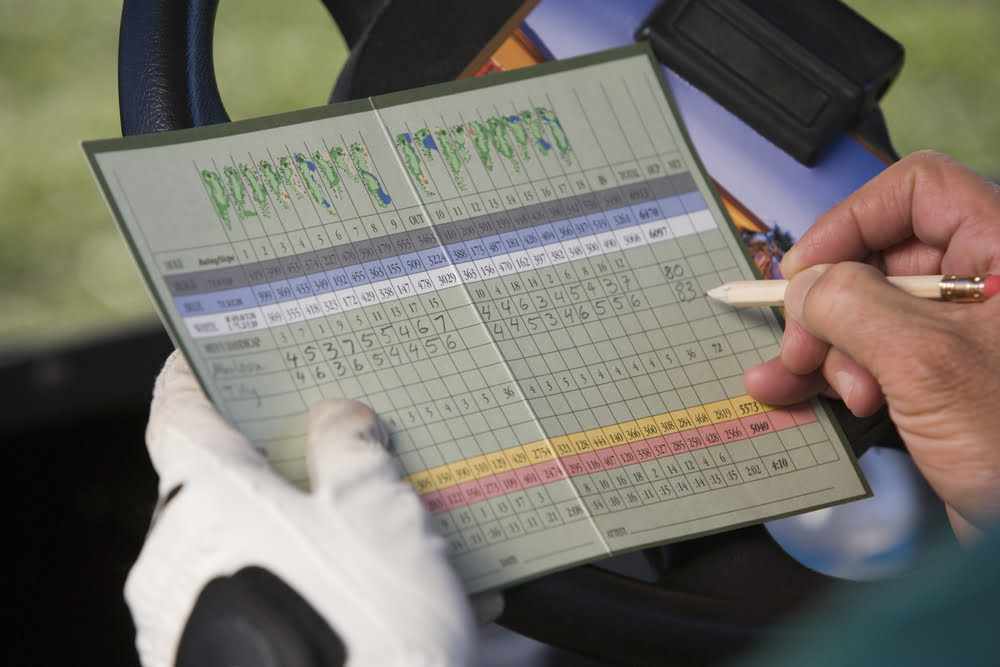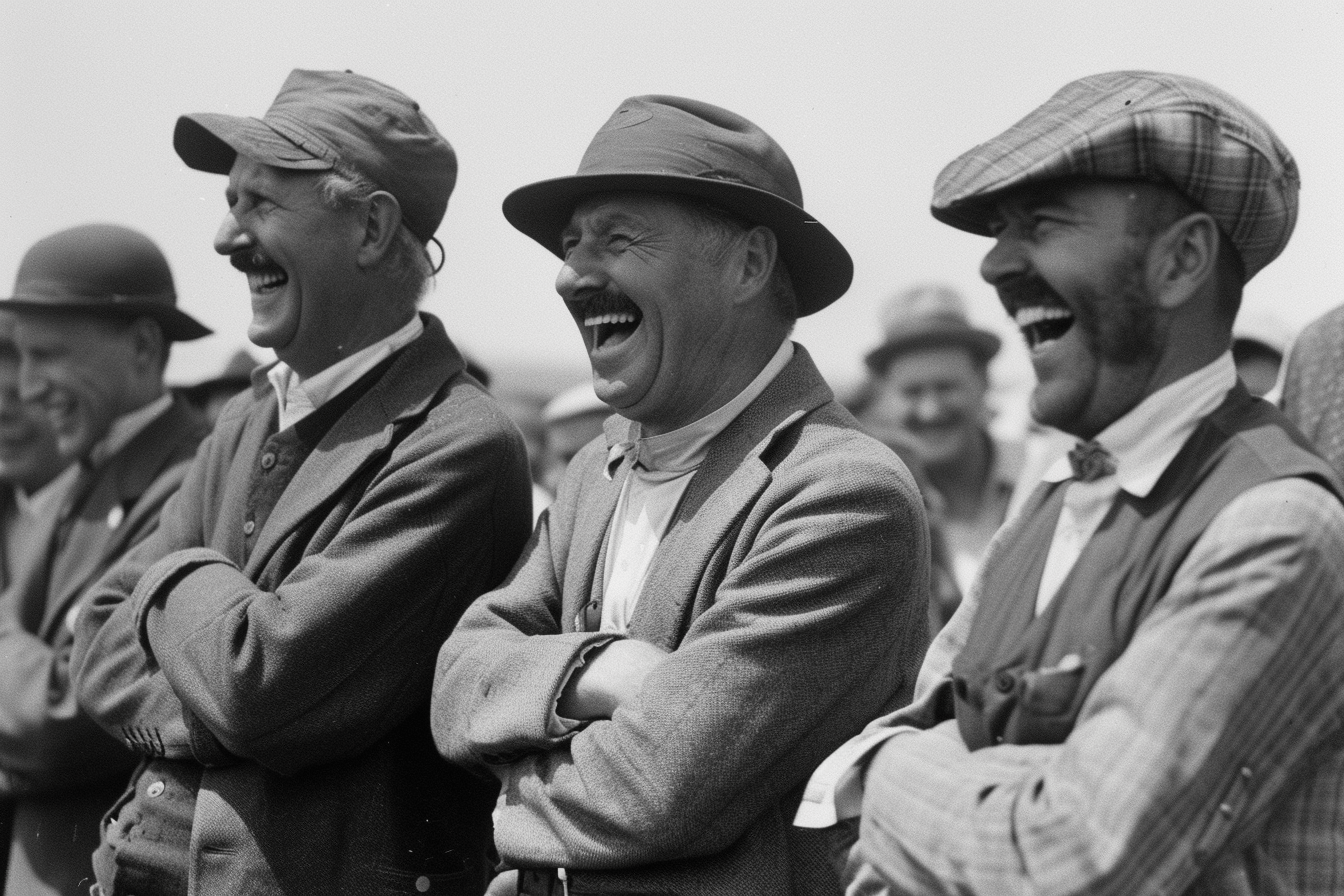
Golfers have favoured Stableford scoring as their go-to alternative scoring system for over 100 years. This system offers a more forgiving approach to the game we all love.
The first competitive game took place on May 16, 1932, introducing a point-based system that rewards good play instead of punishing mistakes.
Let’s explore what Stableford golf really means. The scoring system differs from traditional stroke play by awarding points based on your hole-by-hole performance.
To name just one example, you earn 2 points for a par, 3 points for a birdie, and 1 point for a bogey. Players who match their handicap exactly should finish with 36 points, averaging two points per hole.
British golfers especially embrace this format, making it their top choice for club competitions and social golf events. The system stands unique as the only scoring method besides stroke and match play used on the PGA Tour.
We chose this system because it encourages aggressive play that excites both players and spectators.
This piece will guide you through the essentials of Stableford scoring. You’ll discover why it might suit your game perfectly and how to maximise enjoyment with this approach to golf.
Contents
Stableford vs Traditional Scoring

The main difference between Stableford and traditional scoring comes from their opposite goals. Players in stroke play want the lowest total strokes, while Stableford players chase the highest point total.
This complete flip changes how players tackle each hole on the course.
Key differences in scoring approach
Traditional stroke play adds up every shot you make throughout 18 holes. Stableford works differently by giving points based on how well you play each hole compared to par.
Here’s how the points work:
- 5 points for an albatross (3 under par)
- 4 points for an eagle (2 under par)
- 3 points for a birdie (1 under par)
- 2 points for a par
- 1 point for a bogey (1 over par)
- 0 points for a double bogey or worse
This straightforward scoring method equals stroke play mathematically, but caps the worst score at double bogey. Players aim for 36 points over 18 holes as par, and scoring above 40 points shows excellent play.
Impact on pace of play
Stableford scoring speeds up the game. Players can pick up their ball and head to the next tee once they can’t score points on a hole, usually after hitting double bogey.
This practical rule saves everyone from watching others struggle through terrible holes.
The game flows better with Stableford rules, especially on new courses or during short winter days. Players stay motivated because they’re never really out of the game, even after a rough hole.
Why Stableford is less punishing
Frank Barney Gorton Stableford created this system to keep players from quitting after one or two horrible holes. Yes, it works – one disaster hole won’t destroy your entire round.
The point system lets players take more risks because the downside stays limited. A bold shot might cost a few points if it fails, but success brings bonus points.
High-handicap players and those with up-and-down games love this format.
The World Handicap System has helped higher handicappers close the scoring gap in Stableford competitions. This creates a relaxed vibe in mixed-skill groups and explains why so many players enjoy this format.
How to Play a Stableford Round

The Stableford round becomes simple after you learn how points match up with your performance against par and your handicap adjustments. This scoring system turns into a fun experience once you understand the basics.
Step-by-step guide to scoring
Your Stableford points follow a clear pattern. The system awards points based on your net score (actual strokes minus handicap strokes) compared to each hole’s par:
- 0 points – Double bogey or worse (two or more strokes over par)
- 1 point – Bogey (one stroke over par)
- 2 points – Par
- 3 points – Birdie (one stroke under par)
- 4 points – Eagle (two strokes under par)
- 5 points – Albatross (three strokes under par)
The total of your points across all 18 holes determines the winner. The player with the highest score wins.
Playing exactly to your handicap should give you 36 points, which means two points per hole.
Using the stroke index and your handicap
Your scorecard’s stroke index shows how tough each hole is. The hardest hole is marked as 1, while 18 marks the easiest one.
This index helps figure out where you get your handicap strokes.
Here’s how it works: An 18-handicap player gets one extra stroke on each hole. A 6-handicap player receives an extra stroke only on holes marked 1 through 6.
Players with a 22 handicap get two extra strokes on holes 1-4 and one extra stroke on holes 5-18.
Let’s look at an example. Picture a par-4 hole with stroke index 4. A 6-handicap player would get one extra stroke here.
This makes it play like a par-5. Scoring a 5 on this hole counts as a net par, which earns 2 points.
When to pick up your ball
tableford offers a nice advantage – you don’t have to finish every hole. Just pick up your ball and head to the next tee if you can’t score any points.
This usually happens two strokes over your adjusted par.
The “pick-up” rule makes the game move faster than regular stroke play. Players enjoy their rounds more because the pace stays quick.
Posting your score for handicap purposes
Stableford rounds count toward your handicap even with their unique scoring method. Here’s what you need to do:
- Write down both your strokes and points for each hole
- Submit your score right after your round, ideally the same day
- Include the date, course rating, and slope rating from your tees
Note that your handicap calculation needs your actual strokes on holes where you scored points, not the Stableford points themselves.
Tips for Beginners Using Stableford

Playing with the Stableford scoring system needs a different mindset than traditional stroke play. These practical tips will help you score more points and enjoy the game once you grasp the simple concepts.
Focus on birdies and pars
The Stableford format gives more rewards for aggressive play than traditional scoring. Birdies (3 points) and eagles (4 points) give you substantial point gains compared to pars (2 points).
You should analyse your game to identify your strengths. Strong drivers can target par-5s to get potential birdies.
Players with a good short game should focus on getting up and down on shorter par-4s. Your main strategy should be to plot your way around each hole to score maximum points.
Your overall score can dramatically improve with those occasional birdies, even though consistency matters in Stableford.
Take more risks on easier holes
Check the stroke index of each hole before you start your round. You can play more aggressively on holes with higher stroke indices.
These easier holes give you a good chance to take calculated risks:
- Go for longer drives even if slightly riskier
- Attack pin positions more aggressively
- Attempt more challenging approach shots when birdie is possible
You should know where you receive handicap strokes too. A bogey on a high-stroke index hole where you receive a shot can still earn you 2 points – the same as a par on a regular hole.
Don’t worry about blow-up holes
The best part about Stableford is how it reduces the effect of disaster holes. You can’t score less than zero points on any hole, whatever number of strokes you take.
We all face holes where everything goes wrong. You should pick up your ball and move to the next tee once you can’t score points anymore (usually after reaching a double bogey).
This approach keeps your momentum going and speeds up play. Your next hole always gives you a chance to score points, so stay positive.
Use apps to simplify scoring
Keeping track of Stableford points by hand can be tricky. Many golf apps now do the calculations for you:
mScorecard stands out as a detailed option that calculates Stableford points instantly, tracks statistics, and manages side games. GolfNow Compete can also handle Stableford scoring while factoring in handicaps.
These digital tools help you focus on your game instead of doing maths, which makes Stableford scoring more fun for beginners.
When and Why to Use Stableford

Stableford scoring has become the go-to choice for everything from casual weekend games to serious club tournaments. This scoring system can boost your game experience in many ways, and knowing the best time to use it makes all the difference.
Best situations for Stableford scoring
The Stableford system really shows its value in specific settings. Most corporate golf days and charity events use this format because it works great for players of different skill levels.
While you won’t see it much in pro tournaments, it’s still the most popular way to keep score at club level. Players find it especially useful on unfamiliar courses or during shorter winter days.
They can pick up their ball after reaching a certain number of strokes, which keeps the game moving.
Corporate events are a great fit for the Stableford system because it’s easy to understand. Even newcomers can stay competitive, which makes these events more fun for everyone.
Team events often use Stableford scoring by counting the best score on each hole. They usually include both gross and net winners based on player’s handicaps.
Why clubs and social groups prefer it
Golf clubs everywhere have made Stableford their go-to scoring format, and with good reason too. Since its competitive debut in 1932, it has become a huge hit, especially in the United Kingdom where club golfers love its forgiving nature.
The format keeps rounds moving quickly – players just pick up their ball and move on if they can’t score points on a hole. This practical system prevents players from getting stuck on tough holes and keeps everyone moving smoothly through the course.
The point system rewards bold, smart play but doesn’t punish bad holes too harshly. Players feel more relaxed and ready to take calculated risks.
How it helps high-handicap players enjoy the game
Traditional stroke play can be tough on high-handicap players who struggle with consistency. The Stableford system gives them a real shot at competing by adjusting handicaps to level things out.
Dr. Frank Stableford created this system in 1898 because he saw his friends weren’t having fun with traditional scoring’s harsh penalties. The format’s biggest strength is that one bad hole won’t wreck your whole round.
High-handicappers get more adjusted scores on different holes, which makes the game more inclusive. Points you earn early stay on your card even if your game falls apart later.
This safety net lets players try more ambitious shots. The penalty for missing isn’t too severe, but success brings great rewards.
Final Thoughts
Stableford scoring ranks as one of golf’s most player-friendly innovations in the last hundred years. This point-based system changes how we play the game by rewarding achievement rather than punishing failure.
Without doubt, this explains its huge popularity, especially in UK clubs and casual play groups.
Players gain substantially from Stableford’s forgiving nature. A bad hole counts as zero points instead of becoming a scorecard-ruining double-digit nightmare.
This mental freedom helps us bounce back quickly and look for the next chance. On top of that, the game moves faster since we can pick up our ball when scoring becomes impossible.
Golf brings enough challenges without scoring systems that increase our mistakes. Stableford’s real charm lies in its balance – it rewards skilled play while keeping the game fun for players of all skill levels.
High-handicappers find this format freeing because they can compete well despite occasional poor shots.
Dr. Frank Stableford created this system to make golf more enjoyable for everyone, and his innovation still serves that purpose well today. The system works perfectly whether you’re running a corporate event, playing with friends of different abilities, or just want a less punishing round.
Think over trying Stableford next time you play. The mindset it creates – smart risk-taking, quick recovery after poor holes, and celebrating good shots – might revolutionise how you experience and enjoy this wonderful game.

